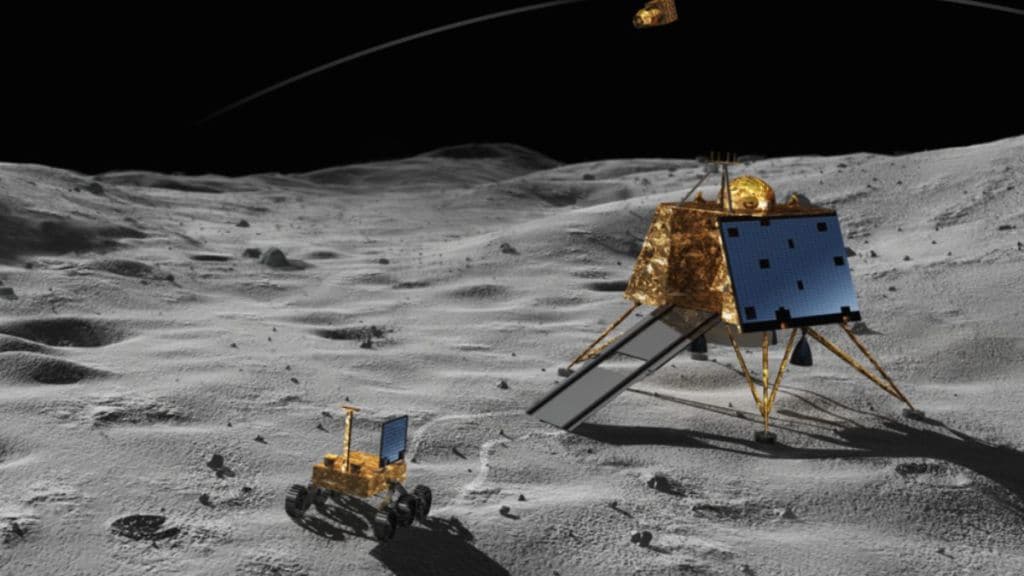On January 24, NASA reported a significant achievement in lunar exploration, as its spacecraft successfully utilized a laser instrument to ping the Vikram lander of India’s Chandrayaan-3 mission.
This achievement marks a collaborative effort between NASA’s Goddard Space Flight Center and the Indian Space Research Organization (ISRO).
Led by Xiaoli Sun, the NASA team developed a retroreflector on Vikram, roughly the size of an Oreo, as part of the partnership. The retroreflector, a Laser Retroreflector Array, measured a mere 2 inches or 5 centimeters in width but played a crucial role in the success of the mission.
A laser beam emitted from NASA’s Lunar Reconnaissance Orbiter (LRO) bounced back and forth between the LRO and the Vikram lander, located 100 kilometers away near the Manzinus crater in the Moon’s south pole region. The reflected light from a small NASA retroreflector on Vikram confirmed the success of the groundbreaking technique.
NASA’s retroreflector, renowned for its simplicity and durability, requires no power or maintenance, with a lifespan spanning decades. It consists of eight quartz-corner-cube prisms arranged within a dome-shaped aluminum frame, effectively reflecting incoming light from any direction back to its source.
This method of accurately pinpointing targets on the lunar surface opens up numerous applications for future lunar missions. The success of the technique showcases the potential for using laser pulses from a mobile spacecraft to determine the exact location of a stationary one.
The Chandrayaan-3 lander’s Laser Retroreflector Array (LRA) has now begun functioning as a fiducial point on the Moon, providing a precisely located marker for reference. ISRO highlighted that NASA’s LRO achieved a laser range measurement using the LRA on December 12, 2023, during lunar night time. The observation occurred as the LRO ascended to the east of Chandrayaan-3, emphasizing the global significance of this collaborative lunar exploration effort.
Retroreflectors, like the one developed by NASA, have been integral to lunar exploration since the Apollo era. Beyond their applications in scientific endeavors, these compact and durable devices have revealed critical information, such as the Moon’s gradual distancing from Earth at a rate of 3.8 centimeters per year. As technology advances, this successful collaboration sets the stage for further innovations in lunar exploration.

